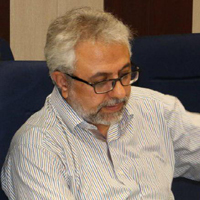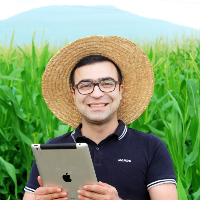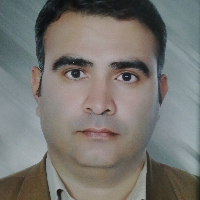Integrated Soil and Water Management at Farm Level in Honam Sub-Catchment(Part II: Soil and Water Recommended Packages for Homogenous Units)
In the first part of this paper, multi-dimensional understanding of the soil and water management of agricultural lands of Honam Sub-catchment was provided by determining the 53 homogeneous soil and water management units (HSWMUs), current behavior assessment of the farmers, and the yield gap analysis. It was found that efficiency of water and fertilizer consumption in the region was relatively low. Therefore, soil and water management packages including soil fertility management, irrigation management and land degradation prevention were prepared for each HSWMUs. The method of preparation and validation steps of management packages is the subject of this paper. To transfer the achieved knowledge and technology and to evaluate and validate the recommended packages, Aliabad Agricultural Jihad Center of Lorestan was selected as an innovation platform. Scaling-up was carried out by active cooperation of multi-level local to national experts to hold a technology exhibition including management of optimal use of chemical, organic and biological fertilizers, and irrigation methods to test the research results. To this end, the selected technologies and recommendations were implemented at volunteer farmers’ fields. The pilots were separated into two treatments of farmers' conventional practice and integrated recommendation in the beet-wheat rotation. The results of the best bet showed that, on average, crop production of winter wheat increased from 5 to 7.5 t/ha and water use efficiency improved by 13%. These results were displayed to other farmers on the field day, which matched up with the time of wheat harvest. By proofing the effectiveness of the results in the farmers' fields, the soil and water management packages of the region were prepared. Despite holding workshops for farmers, results were not scaled to others. We found that the out-scaling of soil and water management packages within HSWMUs and improvement of the average yield along with the principles of sustainability is rooted in three gaps: yield, research and development, and value chain gap. In other words, the awareness and motivation of the farmers, the ability to implement recommendations, and the availability of facilities are the basic conditions for filling crop yield gap in the region. Therefore, one-year pilots are not effective enough and should be continued for several years. Afterward, the capacity building of local extensions at the Soil and Water Research Institute (SWRI) was carried out to show the different stages of preparing HSWMUs, recommendations and instructions. All data were transferred to the innovation platform in digital and printed format. Receiving feedback and to continue scaling-out under spiral proses method, a number of farmers of HSWMUs who volunteered to test the recommended packages in their farms were selected, and the pilots was designed based on participatory research. It is expected that with the establishment of long-term demonstration farms and the provision of various requirements such as the existence of various fertilizers and other agricultural inputs by the collaboration of public and private sectors, the transfer of recommendations to other farmers as well as decision makers of the sub-basin is facilitated.
-
Monitoring Changes in Rice Cultivation Area using Multi-Temporal Satellite images (Case Study: Beiranshahr Region, Iran)
*, Mohsen Ahmadee, Rabee Rustum, Anahid Salmanpour
Journal of Drought and Climate change Research, Summer 2024 -
effect of biofertilizers on the growth and yield of three rainfed barley (Hordeum vulgare L.) cultivars
*, Shahram Omidvari, Mohsen Ahmadee
Soil Management and Sustainable Production, -
Investigation of nitrate status in agricultural products of Iran and criticism of published studies – a review study
Meysam Cheraghi, Karim Shahbazi *, Arzhang Fathi Gerdelidani, , Mostafa Marzi, Kobra Sadat Hasheminasab Zavareh, Mehdi Beheshti
Iranian Journal of Soil and Water Research, -
Integrated Soil and Water Management at Farm Level in Honam Sub-Catchment(Part I: Determination of Homogeneous Soil and Water Management Units)
MohammadReza Balali *, , Kamran Eftekhari, Hamed Rezaei, , Vinay Nangia, , Saeed Ghalebi, Mir Naser Navidi, Bahareh Delsouz Khaki, Alireza Ziaei Javid, Mehdi Panahi, MohammadReza Emdad, Naser Davatgar, Shahram Omidvari, MohammadHossein Davoodi, Ashraf Esmaeilzad, FARHAD REJALI, Zahra Mohammadesmaeil, Morad Sepahvand, Morad Ali Ghanbarpouri, , Masoumeh Matinkia, Mahnaz Sepahvand, Morad Azizollahi
Iranian Journal of Soil Research, -
The evaluation of DSSAT model for simulating wheat grain yield under different chemical and organic fertilizer application
MohammadReza Emdad *, Arash Tafteh, , Seyed Ali Ghaffarinejad
Journal of Crop Science Research in Arid Regions, -
A Framework for Integrated Soil Fertility and Plant Nutrition Management in Iran
*, MohammadReza Balali, Farhad Rejali, Azadeh Sedaghat
Journal of Land Management, -
Evaluation of irrigation hydro-module of major plants of cropping pattern to reduce water stress and optimize agricultural water consumption in Honam sub-catchment
*, Saeed Ghalebi, Mohammad Reza Emdad, Mehdi Panahi
Journal of Crop Science Research in Arid Regions,







